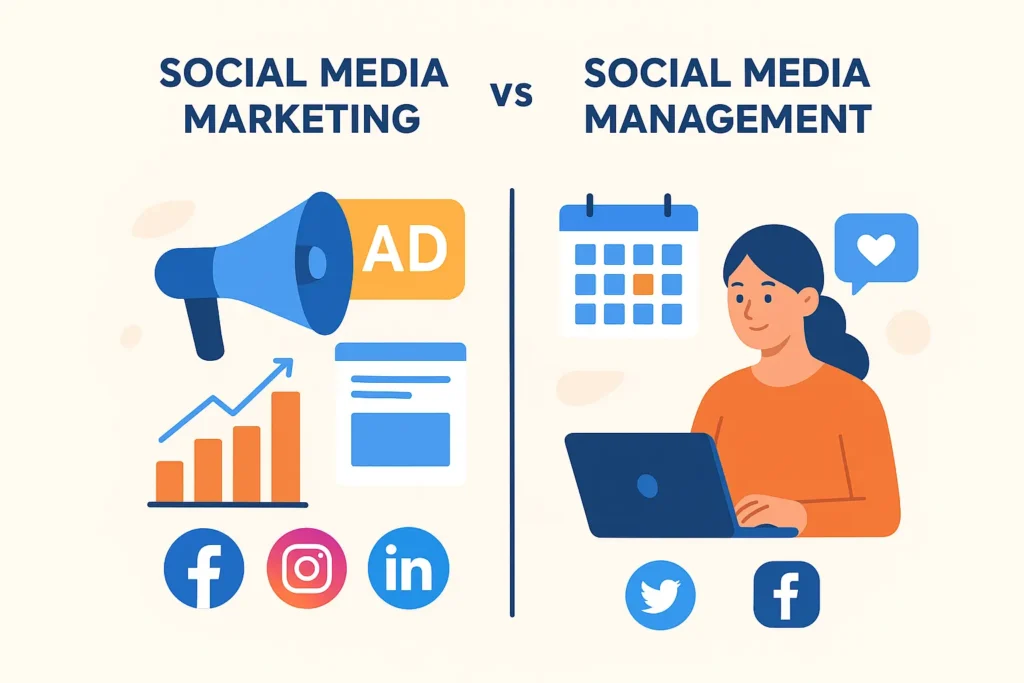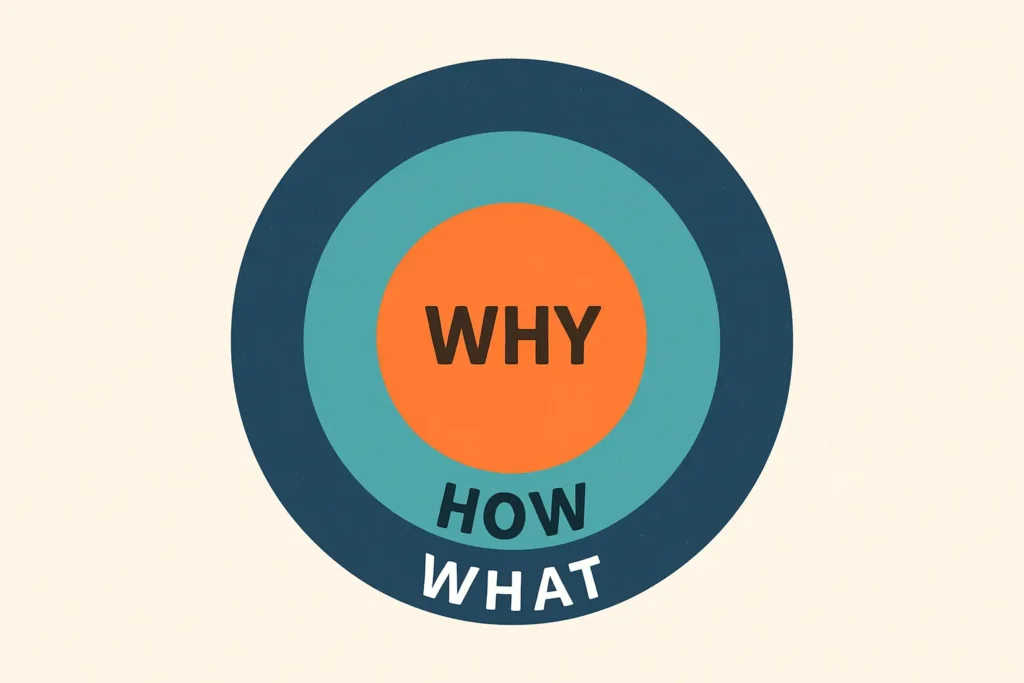Social Media Marketing vs Social Media Management
Wondering what the differences are between social media management and marketing? Both are necessary for creating a powerful online presence, but they have rather different functions. Social Media Marketing focuses on tactics for expanding your brand, increasing interaction, and generating leads, whereas Social Media Management entails planning, scheduling, and maintaining your social media accounts to ensure constant and effective communication. This blog delves into the distinctions, responsibilities, and benefits of each, assisting organizations and individuals in understanding how to best use both for maximum social media effect. Social Media Marketing vs Social Media Management – Explained Businesses require a strong social media presence to interact with their target audience, increase brand awareness, and drive growth. However, many people mistake Social Media Marketing and Social Media Management. Despite their tight relationship, they have diverse functions and call for different approaches. Developing and implementing strategies to accomplish corporate objectives, such as raising brand awareness, generating leads, and boosting revenue, is the main focus of social media marketing. It includes actions such as paid advertising, influencer marketing, content planning, and campaign performance analysis. Essentially, it is about leveraging social media as a tool to expand your business. Conversely, social media management focuses on managing and maintaining social media accounts daily. This includes planning postings, keeping an eye on involvement, answering messages and comments, supervising community interactions, and guaranteeing platform-wide brand consistency. It serves as the foundation for your social media channels’ organization, engagement, and activity. Knowing the distinction between Social Media Marketing vs Social Media Management is essential for companies and advertisers. Management maintains a seamless and constant presence that builds audience loyalty and trust, while marketing propels growth and quantifiable outcomes. Brands can increase engagement, stay relevant, and succeed over the long run on social media by skillfully combining the two. What is Social Media Marketing Social media marketing (SMM) is the practice of leveraging social media platforms to market a brand, product, or service, connect with an intended demographic, and fulfill marketing objectives such as raising consumer awareness, boosting traffic, and producing leads or sales.It includes a variety of tasks, such as: Creating and publishing content for various social media platforms Launching sponsored marketing campaigns (such as LinkedIn, Instagram, and Facebook ads) Analyze performance indicators to measure engagement, reach, and ROI. Establishing and maintaining connections with the audience through messages, comments, and community involvement Social media marketing is simply the smart use of social media platforms to expand your brand and establish a meaningful connection with your target audience. Social Media Management Social media management is the process of monitoring, coordinating, and sustaining a brand’s social media presence on various platforms. It focuses on the daily tasks that maintain social media platforms, constant, lively, and interesting. Essential responsibilities in social media management consist of: Post planning and scheduling to guarantee a consistent flow of content Tracking audience interactions like comments, messages, and mentions. Safeguarding a brand’s reputation by immediately answering questions and comments Analyzing performance to assess engagement and growth. Ensure consistent brand voice, images, and messaging across platforms. What Differentiates Social Media Marketing from Social Media Management? While Social Media Marketing and Social Media Management frequently overlap, they have distinct goals and roles. Social media marketing is driven by strategy. It focuses on designing campaigns, running sponsored advertising, promoting products or services, and tracking outcomes to achieve business goals such as sales, leads, and brand awareness. The management of social media is based on execution. It includes managing the day-to-day activities of social media accounts, such as publishing material, interacting with followers, keeping an eye on activity, and making sure the brand stays active and consistent. Is Organic Marketing Different from Social Media Marketing? Yes, although they have some similarities, Organic Marketing and Social Media Marketing are not exactly the same. Organic marketing refers to all free tactics for attracting, engaging, and retaining customers that do not involve paid promotion. This entails producing high-quality material, improving for search engines, establishing email lists, participating in communities, and gradually expanding an audience. Social Media Marketing (SMM) refers to both organic (publishing content, engaging with followers, establishing community) and paid efforts (advertising campaigns, sponsored posts, influencer relationships) on platforms such as Facebook, Instagram, LinkedIn, and Twitter. Looking for a trusted social media marketing agency in Kerala? Our expert team helps businesses grow online through targeted strategies, creative content, and data-driven campaigns that boost engagement and conversions. Is This Still Relevant Today? Social media marketing (SMM) is more important than ever in today’s digitally connected world. With billions of users on sites like Facebook, Instagram, LinkedIn, and YouTube, social media is still one of the most effective ways for companies to reach their target market. Here’s why it continues to matter: Massive Reach: Social media platforms have billions of active users every day, allowing marketers direct access to a worldwide audience. Targeted Advertising: Paid campaigns give companies the ability to precisely target particular geographies, interests, and demographics. Brand Awareness & Trust: Regular, interesting material increases credibility and reputation. Customer Engagement: Social media makes it possible to communicate in real time, which strengthens bonds with clients. Cost-Effective Marketing: Compared to traditional methods, SMM provides measurable outcomes at a more affordable price. Conclusion Understanding the distinction between Social Media Marketing and Social Media Management is critical for establishing a robust online presence. While Social Media Management focuses on day-to-day responsibilities such as planning, posting, monitoring, and connecting with audiences, Social Media Marketing takes a more strategic approach, utilizing campaigns, sponsored ads, and data-driven tactics to increase growth, create leads, and meet corporate objectives. Companies that successfully integrate both have a higher chance of achieving sustained success in the digital sphere. As the top digital marketing consultancy in Kerala, The Leeway Media specializes in developing customized plans that combine social media marketing and management, allowing organizations to maximize engagement, reach, and growth. Whether you require constant account management or effective marketing initiatives, our skills will help your company stand out in today’s competitive digital marketplace. Instagram
Social Media Marketing vs Social Media Management Read More »


